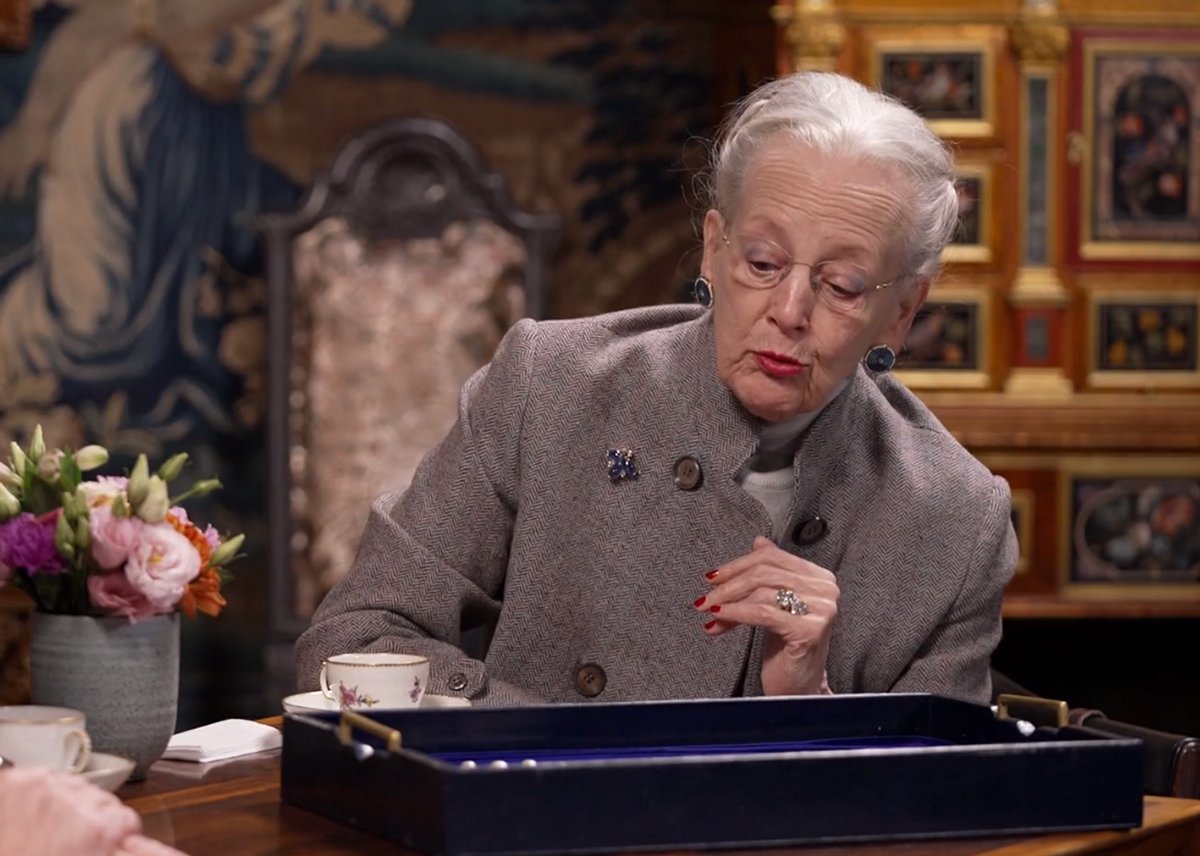
Today, Queen Margrethe II of Denmark celebrates her 82nd birthday. It only feels fitting, then, that we should spend our Saturday chatting about a new television series on Denmark’s royal jewels, Dronningens Skatkammer (The Queen’s Treasury).

The television documentary series is the latest in several media productions centered on Danish royal jewelry, timed to coincide with Queen Margrethe’s Golden Jubilee and Crown Princess Mary’s 50th birthday celebrations. Two exhibitions are currently running in Denmark, one dedicated to Queen Margrethe’s jewelry and the other dedicated to Crown Princess Mary and her predecessors.
The television series takes us behind-the-scenes of the creation of both exhibitions, with major contributions from the royals. The series features interviews with both Margrethe and Mary, as well as appearances from Thomas Thulstrup, museum director of Denmark’s Royal Collection, and others involved with exhibition planning.

We get to see the royal jewelry being photographed for Heidi Laura’s new exhibition companion book, and we see her speaking with Queen Margrethe about some of the pieces included in the text. Margrethe also recorded the audio guide for the exhibition of her jewelry, and we get to hear excerpts of her stories from that part of the exhibit.
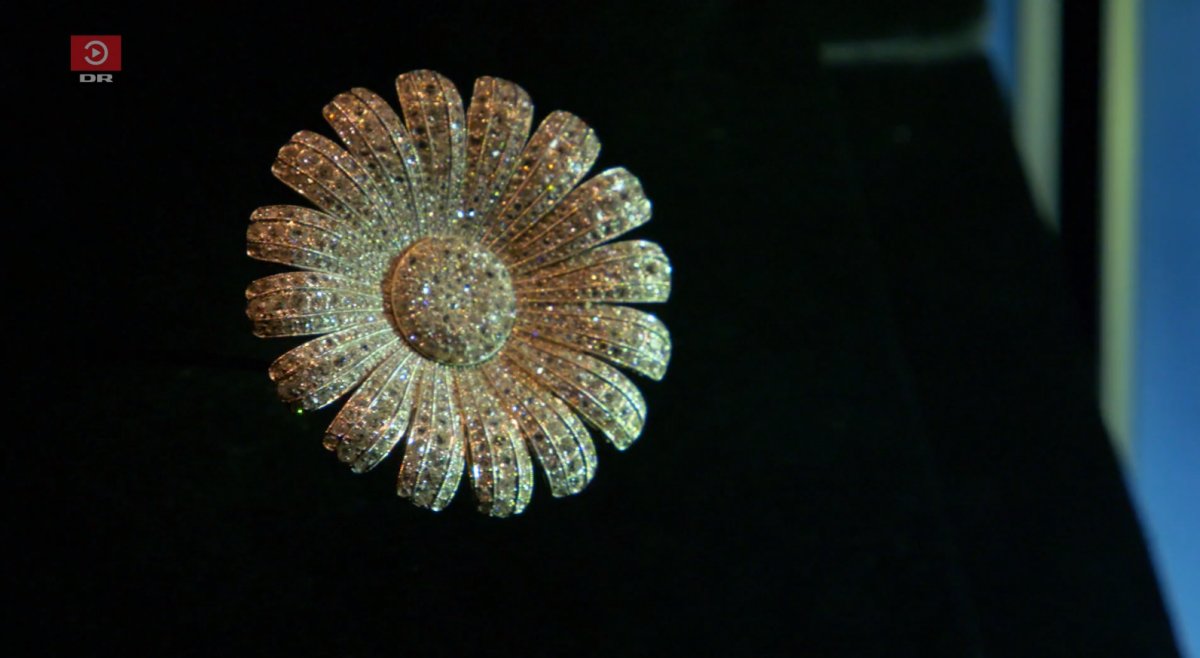
And, of course, the show includes excellent video footage of several important pieces of Danish royal jewelry. Still photography can never quite capture the jewelry detail in the same way that film can. We’re treated to lots of gorgeous close-ups of the jewels, plus tons of archival footage of the royals wearing the pieces. Margrethe tells us the story behind the famous Diamond Daisy Brooch, noting that it was made for Queen Ingrid by her father, King Gustaf VI Adolf of Sweden, using diamonds that belonged to her late mother, Princess Margaret of Connaught.
Margrethe talks about wearing the brooch on her wedding day, and then sentimentally describes the moment when Queen Ingrid gave her the brooch as a 60th birthday present. According to Margrethe, the gift was a total surprise, and it took her breath away. Ingrid wanted to give the brooch to Margrethe directly and in person, instead of bequeathing it to her in her will. Margrethe talks about how incredibly touched she was by the moment.

The Pearl Poiré Tiara and its accompanying married parure are also discussed in detail. Thulstrup talks in detail about the Danish Royal Property Trust, the family foundation that owns the jewels. (It’s a lot like similar foundations in Sweden and the Netherlands—the jewels are available to be worn, but they can’t be sold, etc.)
Queen Margrethe reveals that she wore the pearl set for the first time when she sat for her first official portrait photograph shortly after the death of her father in 1972. Up until then, Queen Ingrid had worn the set, but she decided that Margrethe should be the one to wear the foundation jewels after her accession. (“She had many other jewels,” Margrethe says, putting it mildly.)

Queen Margrethe notes that she reserves the pearl parure for the most formal of occasions, when she needs to look particularly magnificent. She says that she thinks the suite has a bit of extra charm about it, with large diamonds that still manage to be somehow understated. Thulstrup rightly adds that this parure has become the Queen’s signature jewelry set.
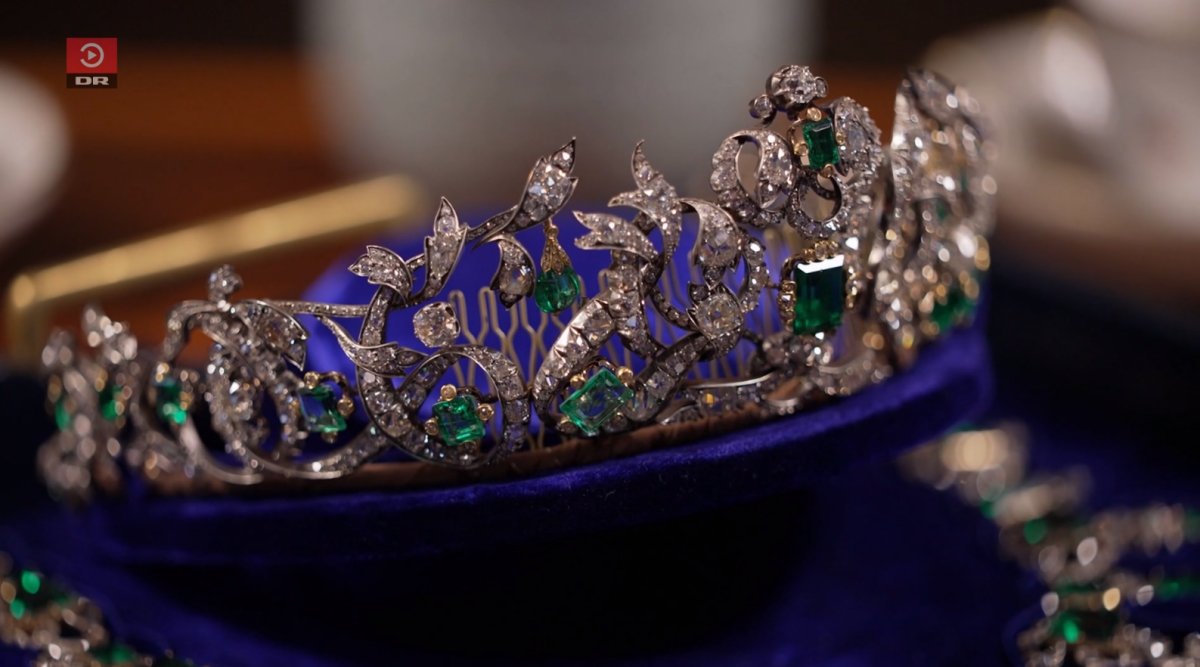
They also talk about the Danish crown jewels. The collection that consists of four parures bequeathed to the crown by Queen Sophie Magdalene, wife of King Christian VI, in the 1740s. The parures (two diamond sets, a ruby and pearl set, and an emerald set) were later redesigned by Queen Caroline Amalie, wife of King Christian VIII, in the 1840s. Margrethe notes that the diamond and emerald set was renovated for Christian and Caroline Amalie’s coronation. She also states that the emeralds are very rare, both because of their very intense green color and because they lack significant inclusions.

Margrethe explains that her interest in and knowledge of the Danish royal jewels comes directly from her mother. While Margrethe’s grandmother, Queen Alexandrine, was not particularly interested in the crown jewel parures (and rarely, if ever, wore them), Queen Ingrid believed firmly that they should be worn. Ingrid worked hard to restore the magnificent necklace from the ruby and pearl suite in particular. The series repeats some of the rules of the jewels: they should only be worn by the monarch or consort, they should be reserved for grand state occasions, and they should not be taken outside of Denmark.
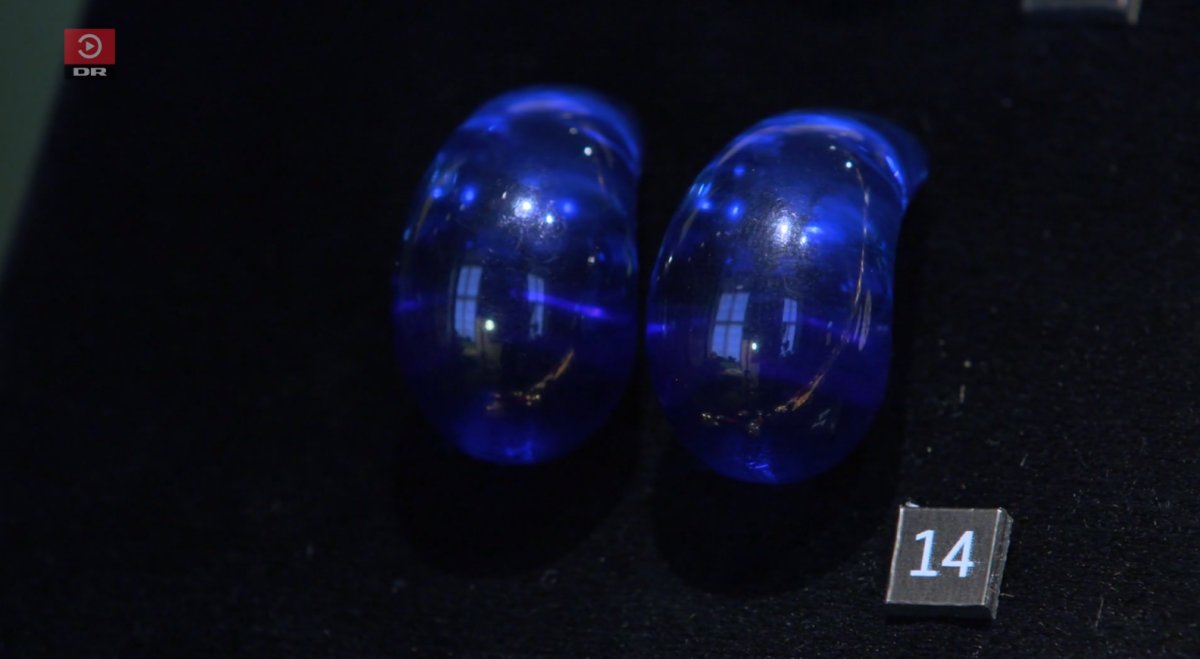
Along with discussing grand gala jewels, the first episode of the series also highlights some of the less precious, but still beloved, pieces from Queen Margrethe’s personal collection. Among these are a pair of plastic earrings that she purchased herself from Matas, a Danish drug store, more than two decades ago. She explains that she was drawn to the earrings because of their beautiful blue color, and that she likes to wear them in the summertime. After all, she notes, you have to wear jewelry appropriate for both your clothing and the occasion. “You don’t wear a lot of diamonds with slacks and sweaters,” she muses.
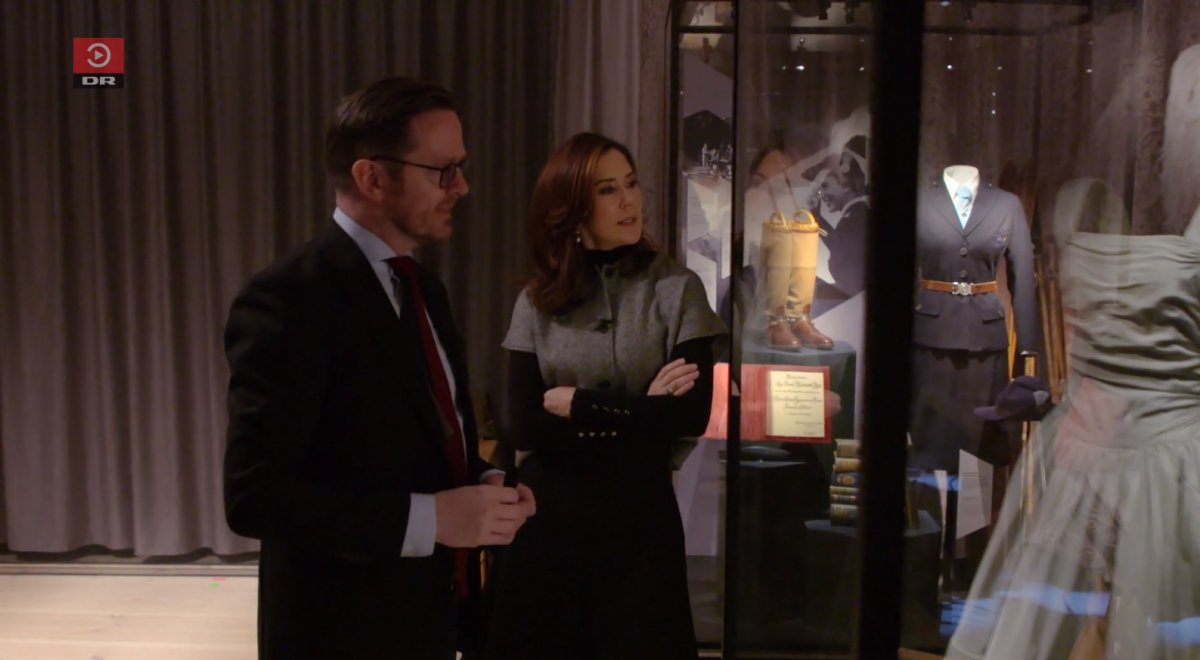
This half-hour episode is just the first of four in the series. At the end of this episode, attention shifted to the crown princess exhibition currently running at Koldinghus. Crown Princess Mary toured part of the exhibition as it was being completed, looking both at items from her own collection and pieces owned and worn by her predecessors. Here, she and Thulstrup view an outfit worn by Queen Ingrid as a young woman. “Flamboyant!” Mary exclaims. She’s touched to hear that the ostrich feathers displayed once belonged to Margaret of Connaught.
The preview for the next episode promises much more, including a closer look at the grand Danish rubies. The show is in Danish, but I was able to use my browser to translate the closed captioning. I’d highly recommend tuning in. The first episode is available to stream now, and episode two airs on April 19!
Leave a Reply
You must be logged in to post a comment.